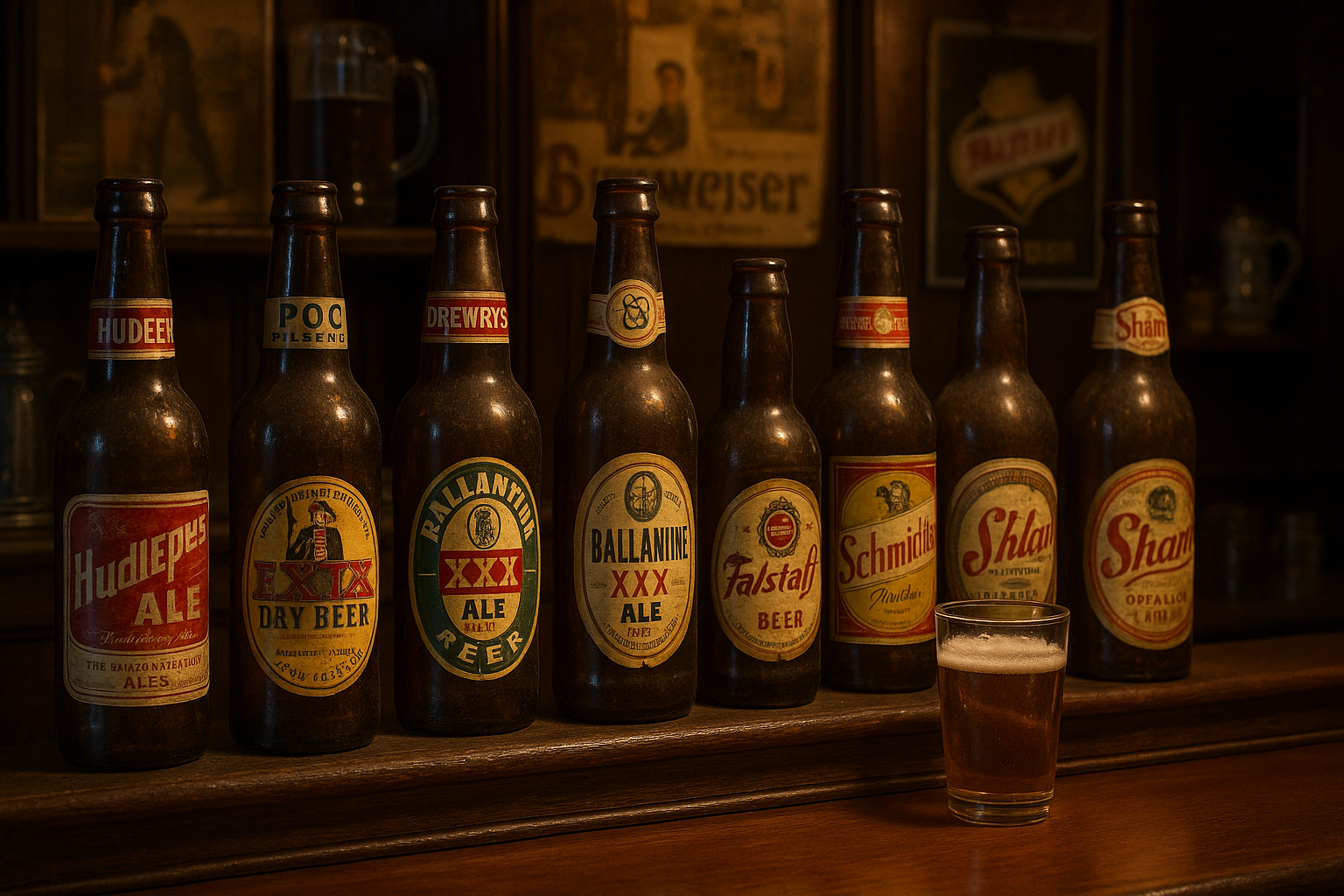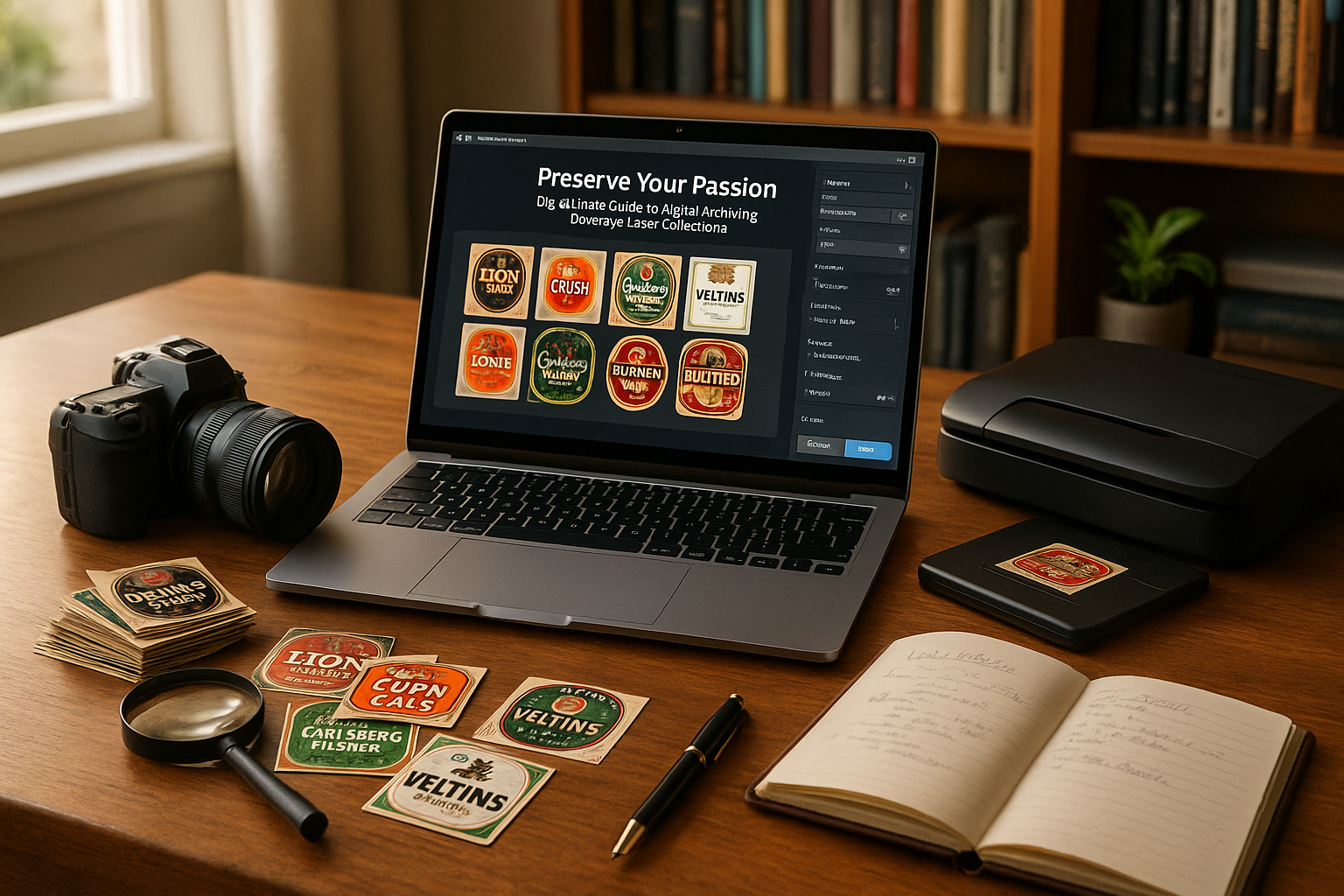Labels are much more than mere identifiers or decorative elements affixed to products; they are powerful tools of communication, storytelling, and branding that have evolved significantly over the centuries. From ancient clay pots to today’s high-tech packaging, labels have been essential in conveying vital information and capturing consumer interest. In this in-depth exploration, we will journey through time to uncover the fascinating history and evolving trends of label size and format, and how they have maximized impact in various industries. 📦✨
Our adventure begins in the distant past, where the earliest labels were hand-painted inscriptions on containers used by ancient civilizations. These early labels were rudimentary, serving primarily as identifiers of contents or origin. However, as trade expanded and the demand for more complex information grew, so did the sophistication of labels. Fast forward to the Industrial Revolution, and you’ll find that the advent of mass production necessitated standardized labeling, marking a significant turning point in the history of label development. The shift from artisanal to mass-produced goods brought about a need for labels that could not only inform but also persuade and captivate the burgeoning consumer market.
As we move into the 20th century, labels became an integral component of marketing strategies. The rise of graphic design and advancements in printing technology allowed for more creative and visually appealing labels. Companies began to realize that the size and format of a label could significantly influence a product’s success. Larger labels offered more space for branding and information, while innovative formats captured consumer attention. This era saw the birth of iconic label designs that are still recognized today, demonstrating the enduring power of effective labeling. The trend towards customization and brand identity began to take shape, setting the stage for the dynamic and diverse labeling practices we see today.
In recent decades, the digital revolution has further transformed the landscape of label design. With the advent of digital printing, brands can now experiment with a variety of label sizes and formats, allowing for unprecedented levels of customization. This flexibility has enabled businesses to cater to niche markets and personalize their offerings like never before. Moreover, the rise of eco-consciousness has influenced label trends, pushing for sustainable materials and minimalist designs that resonate with environmentally-aware consumers. As we delve into this modern era, we will explore how technology continues to shape the way labels are conceptualized and utilized, offering new opportunities and challenges for brands seeking to maximize their impact.
Throughout this article, we will analyze key trends in label size and format across different historical periods, industries, and cultural contexts. We will examine case studies of successful label designs and discuss the psychological effects of various labeling strategies on consumer behavior. By understanding the evolution of labels and the factors driving current trends, businesses can harness the power of effective labeling to enhance brand visibility, communicate their values, and ultimately, maximize their impact in an ever-competitive marketplace. Join us as we unravel the rich tapestry of label history and discover how something seemingly simple can hold immense power and potential. 📜🔍
Understanding the Evolution of Label Sizes and Formats
The history of label sizes and formats is a rich tapestry woven from the threads of technological advancements, consumer demands, and marketing strategies. As we delve into this fascinating journey, it’s crucial to understand the driving forces behind these changes. Labels serve not only as identifiers but also as key elements in branding, compliance, and information dissemination. Over the years, the evolution of labels has been influenced by factors such as printing technologies, material innovations, and regulatory changes.
In the early days, labels were simple tags made from materials like parchment and fabric. They were primarily used for identification purposes. As the industrial revolution brought about mass production, the need for standardized labeling became apparent. The advent of lithography in the 19th century marked a significant milestone, allowing for more intricate designs and larger label sizes. This was a time when the visual appeal of labels started gaining importance, and brands began to experiment with colors and typography to capture consumer attention.
Fast forward to the 20th century, and we see a significant shift towards functional labeling. With the rise of consumerism and global trade, labels needed to convey more information than ever before. This era saw the introduction of barcodes and QR codes, which revolutionized inventory management and product tracking. The digital age further pushed the boundaries, with labels becoming interactive elements that could engage consumers through augmented reality experiences. Today, the trends in label sizes and formats are heavily influenced by sustainability, with a growing emphasis on eco-friendly materials and minimalistic designs.
Technological Advancements and Their Impact on Label Formats
The role of technology in shaping label formats cannot be overstated. With each technological leap, the possibilities for label design and functionality expanded. In the printing realm, the transition from letterpress to digital printing opened new doors for customization and short-run labels. This shift allowed brands to create personalized labels with ease, catering to niche markets and individual preferences.
The integration of digital elements into labels is another noteworthy trend. Smart labels equipped with NFC (Near Field Communication) technology can communicate with smartphones, providing consumers with a wealth of information at their fingertips. This interactivity is transforming labels from static identifiers to dynamic gateways of information and brand engagement. Furthermore, advancements in materials science have led to the development of labels that can withstand extreme conditions, ensuring that critical information remains legible throughout the product’s lifecycle.
In terms of format, the trend is moving towards simplicity and clarity. With consumers demanding transparency and authenticity, brands are opting for clean designs that convey information succinctly. Minimalistic labels with bold typography and clear hierarchies are becoming the norm, ensuring that essential details are easily accessible. This shift is not only a response to consumer preferences but also a reflection of regulatory requirements for clearer product information.
Comparative Analysis of Label Sizes Over the Decades
Label sizes have undergone significant changes over the decades, adapting to the evolving needs of consumers and industries. To better understand these changes, let’s take a closer look at the comparative analysis of label sizes from the early 1900s to the present day.
| Era | Typical Label Size | Common Materials | Key Features |
|---|---|---|---|
| Early 1900s | Small (2×3 inches) | Parchment, Fabric | Basic Identification |
| 1950s | Medium (3×5 inches) | Paper, Cardboard | Color Printing, Brand Logos |
| 1980s | Large (4×6 inches) | Plastic, Laminates | Barcodes, Detailed Information |
| 2020s | Variable (Custom Sizes) | Recycled Materials, Smart Papers | NFC Tags, Interactive Elements |
As shown in the table, the journey from simple, small labels to today’s dynamic and interactive formats highlights the ongoing evolution driven by both technological advancements and consumer expectations. In the early 1900s, labels were limited in size and material due to the constraints of printing technology. However, as printing techniques improved and materials like plastic and laminates became more accessible, labels grew larger and more informative. By the 2020s, the focus shifted to customization and sustainability, with an emphasis on eco-friendly materials and interactive features.
The Role of Sustainability in Modern Label Design
In recent years, sustainability has emerged as a pivotal factor influencing label design and production. As consumers become more environmentally conscious, brands are under increasing pressure to adopt sustainable practices throughout their supply chains, including label production. This shift towards sustainability is not only a response to consumer demands but also a strategic move to align with global sustainability goals and reduce environmental impact.
One of the most significant trends in sustainable label design is the use of eco-friendly materials. Recycled paper, biodegradable plastics, and sustainable inks are becoming commonplace in label production. These materials not only reduce the environmental footprint but also convey a brand’s commitment to sustainability to consumers. Additionally, many brands are opting for water-based adhesives and non-toxic dyes, further minimizing the ecological impact of their labels.
Another aspect of sustainability in label design is the reduction of label size and material usage. By optimizing label designs to include only essential information and eliminating unnecessary embellishments, brands can significantly reduce their material consumption. This trend aligns with the broader minimalist movement in design, emphasizing functionality and simplicity. Moreover, digital innovations such as QR codes and NFC tags allow brands to offer additional information without increasing the physical size of labels, thereby conserving resources.
Innovative Approaches to Eco-Friendly Labeling
Innovation is at the heart of sustainable label design. Brands are exploring new technologies and processes to create labels that are both functional and environmentally friendly. One such innovation is the development of waterless printing technologies, which eliminate the need for harmful chemicals and reduce water usage. These technologies not only benefit the environment but also improve the quality and durability of printed labels.
In addition to material and process innovations, brands are increasingly leveraging digital solutions to enhance sustainability. Virtual labels, for example, provide an innovative way to convey product information without physical labels. By using augmented reality (AR) and mobile apps, consumers can access detailed product information and interactive content by scanning the product with their smartphones. This approach not only reduces waste but also enhances the consumer experience by providing rich, engaging content.
Another promising trend is the integration of circular economy principles into label design and production. By designing labels with recyclability and reusability in mind, brands can create closed-loop systems that minimize waste and promote resource efficiency. For instance, using mono-material labels that can be easily separated from packaging and recycled together reduces the complexity of recycling processes and improves overall sustainability.
Challenges and Opportunities in Sustainable Labeling
While the push towards sustainable labeling presents numerous opportunities, it also comes with its fair share of challenges. One of the primary challenges is the cost associated with sustainable materials and technologies. Although prices are gradually decreasing as demand increases, the initial investment can be a barrier for smaller brands and businesses. However, as more companies adopt sustainable practices, economies of scale are expected to drive down costs, making eco-friendly labels more accessible.
Another challenge is the need for industry-wide standards and certifications to ensure the authenticity and credibility of sustainable labels. Without standardized guidelines, there is a risk of greenwashing, where brands make misleading claims about the environmental benefits of their products. To address this, industry bodies and regulatory agencies are working to establish clear criteria and certification processes for sustainable labeling, providing consumers with the assurance they need.
Despite these challenges, the shift towards sustainable labeling presents significant opportunities for brands to differentiate themselves in a crowded market. By prioritizing sustainability, brands can build trust and loyalty among eco-conscious consumers, ultimately driving long-term success. Furthermore, sustainable labels offer the chance to innovate and lead the industry in new directions, paving the way for a more environmentally responsible future.
Future Trends in Label Sizes and Formats
As we look to the future, it’s clear that the trends in label sizes and formats will continue to evolve in response to technological advancements, consumer preferences, and regulatory changes. The interplay between these factors will shape the label landscape, creating new opportunities and challenges for brands and manufacturers alike.
One of the key trends on the horizon is the increasing demand for personalization and customization. With the rise of digital printing technologies, brands can create highly personalized labels that cater to individual preferences and needs. This trend is particularly relevant in the age of e-commerce, where consumers expect tailored experiences and products. Personalized labels not only enhance the customer experience but also allow brands to connect with their audience on a deeper level.
Another emerging trend is the integration of digital and physical elements in label design. As the Internet of Things (IoT) continues to expand, smart labels with embedded sensors and connectivity features are becoming more prevalent. These labels can collect and transmit data, providing valuable insights into consumer behavior and product performance. For example, temperature-sensitive labels can monitor the freshness of perishable goods, while interactive labels can offer personalized promotions and recommendations based on consumer preferences.
In terms of sustainability, the future of label design will likely see a greater emphasis on circular economy principles. Brands will increasingly prioritize materials and processes that promote recyclability and reduce waste, aligning with global efforts to create a more sustainable future. Innovations such as bio-based materials and compostable labels will play a crucial role in this transition, offering environmentally friendly alternatives to traditional labeling solutions.
Opportunities in Smart Label Technologies
Smart label technologies are poised to revolutionize the way brands interact with consumers and manage their supply chains. By incorporating advanced technologies such as RFID (Radio Frequency Identification) and NFC, smart labels can offer real-time tracking and data collection capabilities. This not only enhances transparency and traceability but also enables brands to optimize their operations and improve supply chain efficiency.
Moreover, smart labels can enhance the consumer experience by providing personalized content and interactive features. Through the use of augmented reality and mobile apps, brands can create immersive experiences that engage consumers and build brand loyalty. For example, a smart label on a wine bottle could offer tasting notes, food pairing suggestions, and vineyard information when scanned with a smartphone. This level of interactivity not only adds value to the product but also strengthens the emotional connection between the brand and the consumer.
The potential applications of smart labels extend beyond consumer products. In the healthcare industry, smart labels can improve patient safety by ensuring accurate medication administration and monitoring. In logistics, they can streamline inventory management and reduce the risk of errors. As technology continues to advance, the possibilities for smart labels are virtually limitless, offering exciting opportunities for innovation and growth across various sectors.
For more insights into the future of smart labels, watch this informative video: Smart Labels: The Future of Labeling | Label Insights Channel.
Conclusion: Embracing the Future of Labeling
The journey through the history of label sizes and formats reveals a dynamic and ever-evolving landscape shaped by technological advancements, consumer demands, and sustainability considerations. As we move forward, brands must embrace the opportunities presented by new technologies and sustainable practices to stay ahead in the competitive marketplace.
By prioritizing personalization, integrating digital elements, and adopting sustainable practices, brands can create labels that not only meet the needs of today’s consumers but also contribute to a more sustainable future. As the industry continues to innovate and evolve, the possibilities for label design and functionality are limitless, promising an exciting future for brands and consumers alike.
Toni Santos is a visual poet and botanical dreamweaver, archiving the ephemeral beauty of dreams through nature’s delicate language.
In his artistic universe, every petal, vine, and root becomes a memory—an echo from the subconscious—preserved in time like pages from an ethereal journal. Toni treats plants not just as living beings, but as dream-symbols: vessels of forgotten feelings, silent wishes, and secret stories waiting to unfold.
His work is rooted in the belief that nature holds the vocabulary of dreams. Through botanical compositions, symbolic floral creations, and enchanted visual studies, he gives form to the unseen — the moment between sleep and wakefulness, where memory fades and imagination begins.
As the visionary behind Vizovex, Toni curates collections that feel like fragments of a dreamscape: moss-filled glass jars, mythic flowers, ancient botanical symbols reimagined. These creations invite you to explore your inner worlds and reawaken your sense of wonder.
His work is a tribute to:
The dreamlike language of plants and natural symbols.
The quiet messages found in forgotten moments.
The art of recording the soul’s memories in organic form.
Whether you’re a seeker of meaning, a lover of myth, or someone who drifts between the symbolic and the real, Toni welcomes you to explore an archive of dreams — one petal, one relic, one timeless whisper at a time





